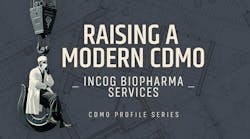As most companies know, it’s nearly impossible to prevent unforeseen incidents from arising in the manufacturing process. Therefore, it’s critical to put the right systems and processes in place to deal with these incidents as quickly, efficiently and effectively as possible. To do this, we evaluated a variety of software systems on the market and decided on one, Sparta Systems’ TrackWise, that provided a centralized quality management system (QMS). The solution was easily configured to fit our business processes without the need for customization.
We now use the system as the hub of our quality management initiatives, which has served to improve visibility and allowed us to log events and problems at each level, investigating them to determine root cause, anticipate future issues and prevent them from occurring again. Combined with effectiveness checks to measure and to ensure that the root cause has been addressed, the system enables us to maintain compliance, improve control, reduce risk and lower costs through the consolidation of redundant systems and the reduction of manual processes. Using the system for corrective and preventive action (CAPA) management enables us to manage unexpected issues that arise in the development and manufacturing process.
How We Did It: Five Steps for Success
Here are five steps we followed to implement a closed-loop CAPA system:
1) Deployed an effective electronic quality management system for logging and tracking events utilizing centralized software, thus eliminating confusion between departments.
Comprehensive investigation of any incident or event is crucial. Without a centralized quality management system it is, at best, difficult to obtain a complete picture making it almost impossible to determine the root cause and develop an appropriate and effective CAPA plan.
Our centralized QMS provides accessibility across departmental boundaries, making pertinent information available to all key stakeholders. This visibility enables precise, accurate, and timely resolution.
2) Utilized comprehensive investigation and root-cause analysis processes to ensure corrective and preventive measures address the immediate issue and eliminate future occurrences.
Event investigations are often conducted by a variety of departments. In order to ascertain the root cause of an event, findings from the various investigations must be reviewed holistically. Our QMS provides a means for grouping and summarizing all of the records pertaining to a given event. This comprehensive approach allows for accurate determination of root cause whereby an appropriate and effective corrective and/or preventive action plan may be developed.
3) Maintained accountability through notification and escalation procedures and by utilizing automated and on-demand reporting.
Assigning event investigation and CAPA records across departmental boundaries can lead to confusion or loss of accountability. Communication with key personnel is essential to ensuring timely resolution of events. Through notifications and reports, management and staff know exactly what state a record is in and who is working on it.
Notifications are distributed automatically to appropriate personnel throughout the lifecycle of each event record, including record origination, record assignment, task completion and record approval. Notifications are also used to manage timeliness of each event record. Escalation procedures ensure that appropriate personnel are notified as due dates approach and provide a priority management tool to responsible parties.
To reinforce the notification procedures, accountability reports are distributed automatically on a periodic basis. These reports are also available on-demand and provide real-time information.
4) Addressed events immediately, and followed through to closure with minimal delay.
Easy accessibility to event records, notifications and reports enables immediate response by all personnel involved in the resolution process. As a Web-based system, end users can log into the QMS form any location. This capability creates the opportunity for quick response.
5) Employed effectiveness checks to measure how well the CAPA plan worked post-implementation.
Effectiveness planning is essential to the elimination of recurring events. The system automatically creates and assigns effectiveness check records for each CAPA plan so a review may be conducted to determine if an issue is truly resolved.
Conclusion: Driving Organizational Success with Effective CAPA Management
By following these steps, DPT has been able enhance our quality process, ensuring that the correct processes and procedures are in place to drive organizational efficiencies and innovation. This provides department management and key stakeholders, from R&D to the manufacturing line, with the tools needed to maintain regulatory compliance and to anticipate, thus prevent occurrences.
Implementing a CAPA management system as part of an overall quality management initiative has ultimately reduced costs and given DPT greater visibility into our quality systems across the organization.
About the Author
Ted Strawn is Quality Assurance Systems analyst at DPT Laboratories, a Contract Development and Manufacturing Organization, which is the industry source for liquid and semisolid products for the world’s leading pharmaceutical, biotechnology and healthcare companies. He has worked at DPT for nearly 10 years, including the past two years in which he has been involved with quality assurance programs, developing and validating solutions utilizing the TrackWise solutions created by Sparta.
About DPT Laboratories
With facilities in San Antonio and Lakewood, New Jersey, DPT, a DFB company, is recognized globally for unparalleled semi-solid and liquid technical expertise. DPT is a contract development and manufacturing organization (CDMO) and is the industry source for the world’s leading pharmaceutical, biotechnology, and healthcare companies. With four cGMP facilities and state-of–the-art manufacturing, packaging, and distribution space, DPT offers full service outsourcing solutions including stand alone development, site transfers, turnkey production, packaging, and worldwide distribution. For more information, visit www.DPTLabs.com.





